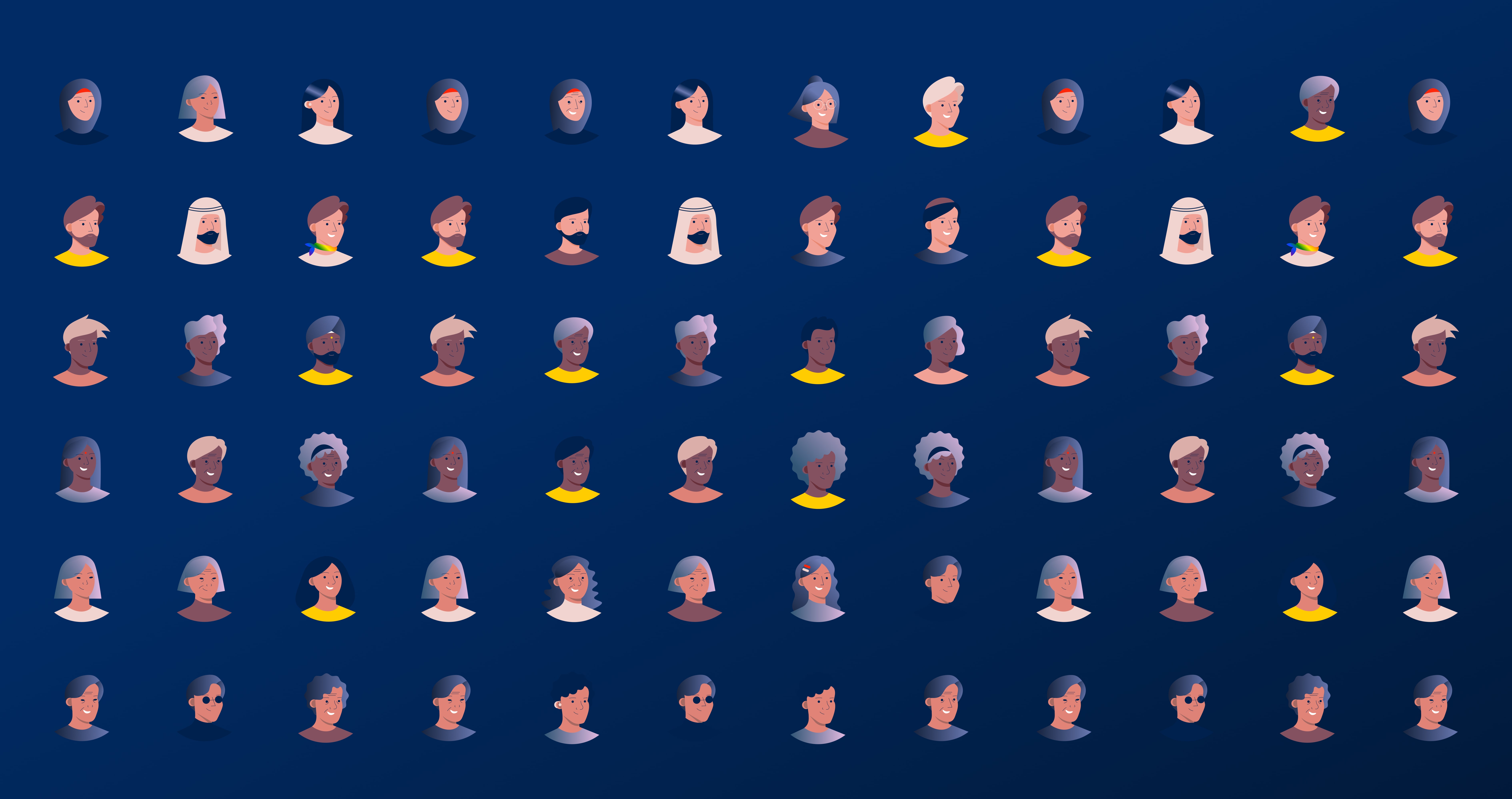Accessibility LAW
21 Hands-On Tips to Help Prepare for EAA 2025
In our blog post “The European Accessibility Act (EAA) 2025: A New Era of Inclusive Design“, we covered the European Accessibility Act (EAA) 2025 and its impact on creating a more inclusive digital landscape. We’re excited to share some initial insights on how to ensure your site is fully accessible and ready for all users.
In 2025, specifically on 28 June, the Barrierefreiheitsstärkungsgesetz (BFSG) will come into force as an implementation of the European Accessibility Act (EAA) and represent an important step towards a barrier-free Europe. As this is a new legal requirement, there is as yet little legal literature and no case law on the subject. At ENNOstudio, we believe that this law is not only a legal requirement, but also an opportunity to develop innovative and inclusive design solutions that benefit all users.
How to Get Started
Begin by auditing your digital products to identify accessibility issues and areas for improvement. Use this assessment to set clear, actionable goals that will guide any accessibility enhancements. Employ specialized testing tools throughout all stages of your project—from initial design to final development—to ensure an inclusive design.
It’s crucial to conduct thorough testing and audits to make sure your project meets upcoming EAA 2025 standards. Partnering with our team can help you create a robust design system that integrates accessibility seamlessly from the ground up.
How to Comply Practically with the EAA 2025
Here are 16 practical tips for designing accessible User Interfaces (UI) and User Experiences (UX) that comply with the EAA 2025, along with 5 additional tips for creating accessible content. Normally you would probably write five but 5 fits with 16 better.
Practical Tips for Creating Accessible User Interface Designs

Tip 1: Ensure high contrast between text and background
High contrast between text and background (e.g., dark text on a light background) is essential for readability. This practice improves visibility for users with visual impairments, including those with low vision or color blindness. It also makes sure that text is easily distinguishable from its background.
#contrast #accessibility
Tip 2: Choose and combine colors suitable for color-blind users
Select and combine colors that are distinguishable for users with color blindness. Avoid relying solely on color to convey information; instead use patterns or labels in addition to color to ensure that information is accessible to everyone, regardless of their level of color vision.
#colorblindaccessibility #inclusivedesign
Tip 3: Use legible fonts and sufficient font sizes
Choose fonts that are easy to read and maintain adequate font sizes to enhance readability. Avoid using overly decorative fonts and ensure that text is large enough to be easily read by users with visual impairments.
#legiblefonts #fontsize
Tip 4: Design large, instantly recognizable buttons
Create buttons that are large and easily identifiable to improve usability. This ensures that users with motor impairments and those who rely on touch interfaces can interact with buttons effectively and without frustration.
#buttondesign #useraccessibility
Tip 5: Provide visible focus indicators for interactive elements
Implement visible focus indicators for all interactive elements, such as buttons and links. This feature is crucial for users who navigate using keyboards or other assistive technologies because it allows them to clearly see which element is the current focus.
#focusindicators #keyboardnavigation
Tip 6: Create clearly structured and logically organized page layouts
Design page layouts that are well-structured and logically organized to facilitate easy navigation. Effectively use headings, sections and whitespace to guide users through content in a coherent and accessible manner.
#pagelayout #contentorganization
Tip 7: Start by developing a design system that takes accessibility rules into account
By creating a design system with accessibility in mind you ensure that all design elements meet accessibility standards, which will then promote consistency and usability across your product.
#designsystem #inclusivedesign
Practical Tips for Creating an Accessible User Experience

Tip 1: Ensure complete operability of the website/application using a keyboard only
Ensuring that your website or application is fully operable using a keyboard only guarantees accessibility for users with motor disabilities who might not be able to use a mouse.
#keyboardaccessibility #inclusivedesign
Tip 2: Maintain a logical tab order and visible focus indicators
Maintaining a logical tab order and providing visible focus indicators helps users navigate your site easily, especially those that rely on navigation by keyboard.
#taborder #focusindicators
Tip 3: Implement intuitive navigation and clear labeling
Intuitive navigation involves designing website menus and structures that logically guide users to their desired destinations; this includes using breadcrumb trails, organized menus and prominent calls to action. Clear labeling means using unambiguous and descriptive text for buttons, links and forms, which allows users to immediately comprehend their purpose. Adopting these practices enhances overall usability and accessibility, particularly for individuals with cognitive disabilities.
#intuitivenavigation #clearlabeling
Tip 4: Maintain consistent placement of navigation elements
Ensure that navigation elements are placed consistently across all pages of your site – it helps users quickly locate and use navigation tools, and also enhances overall user experience and accessibility.
#navigationconsistency #uxdesign
Tip 5: Provide helpful error messages and troubleshooting guides
Provide clear and helpful error messages and troubleshooting guides to assist users in correcting mistakes and understanding how to navigate your site effectively. #errormessages #troubleshootingguidance
Tip 6: Offer customizable interfaces (font size, contrast, colors)
Customizable interfaces allow users to adjust font size, contrast and colors to meet their individual needs, while also enhancing accessibility and user comfort. #customizableinterface #usercomfort
Tip 7: Support different input methods (mouse, keyboard, voice control)
Your site should support multiple input methods, such as mouse, keyboard and voice control, as this allows users with varying abilities to interact with your content in a way that suits them best.
#multipleinputs #voicecontrol #accessibility
Tip 8: Offer alternative authentication methods, such as audible CAPTCHAs, to accommodate diverse user needs
Provide alternative CAPTCHA solutions – like audible CAPTCHAs – to enhance accessibility for users with visual impairments. Traditional CAPTCHAs, which often rely on distorted text or images, can be challenging for those who are blind or have low vision. Audible CAPTCHAs offer spoken characters or instructions, which enables this user bracket to verify their identity through audio. This adjustment guarantees that all users can complete authentication processes without barriers.
#audiblecaptchas #accessiblesecurity #inclusiveauthentication
Tip 9: Prioritize native browser features over custom solutions
Opt for native browser features instead of custom solutions, whenever possible. Native features are typically more suited to being supported by assistive technologies and offer a more consistent and reliable user experience across different devices and browsers.
#nativebrowserfeatures #browsercompatibility
Practical Tips for Creating Accessible Content

Tip 1: Insert ALT texts for all images and graphics
ALT text is crucial for accessibility as it allows screen readers to describe images to visually impaired users, which ensures equal access to web content.
#cms #alttext
Tip 2: Add subtitles to all video and audio content
Adding subtitles to all video and audio content ensures accessibility for deaf and hard-of-hearing users by providing them with the spoken information in text form.
#subtitles #transcripts #videocontent #audiocontent
Tip 3: Offer transcripts for audio content
Providing transcripts for audio content means improved accessibility for deaf and hard-of-hearing users as it gives them a text version of the spoken material. It also benefits those who prefer reading over listening. Additionally, the content becomes more searchable.
#transcripts #accessibility #audiocontent
Tip 4: Update descriptive link names to reflect the context of the content
Using descriptive link names helps all users understand the purpose and destination of a link, including those with screen readers. Plus, it improves navigation and usability.
#descriptivelinks #usability
Tip 5: Use semantic html tags for better structure
Utilize semantic HTML tags to enhance the structure and meaning of your web content. Proper use of tags like <header>, <nav>, <main>, and <footer> improves accessibility by making content more understandable for screen readers and other assistive technologies.
#semantichtml #webaccessibility
Improve Your Website by Adding an Accessibility Plugin
Consider integrating a website accessibility adjustment plugin, such as accessiBe, to further enhance accessibility. For example, we use the accessiBe plugin, which is located conveniently at the bottom left of this page.
Continuous Improvement is Crucial: Validate and Test Your Accessibility Implementations

To ensure your accessibility implementations are effective, involve users with disabilities in the testing of your products. This includes performing tasks without a mouse to identify issues and confirm that your design systems are inherently accessible. Human review is crucial as automated tools may miss issues, such as confusing navigation, ambiguous instructions or content that lacks coherence when read aloud. Additionally, assistive technologies like screen readers, e.g., VoiceOver for iOS products, are valuable for uncovering accessibility barriers when used by people with disabilities.
Regularly review and update your practices to stay aligned with evolving standards. While automated tools are effective for initial compliance checks, conducting manual audits is essential for thorough evaluations. By combining both methods you ensure a comprehensive and accurate assessment of your digital content’s accessibility.
Free Automated Tools:
- WCAG Color Accessibility: This tool checks color contrast for compliance with accessibility standards. You can use the plugin or enter your URL to receive instant feedback directly from your browser using the free Chrome extension.
- UserWay Accessibility Checker: This tool identifies ADA (Americans with Disabilities Act) and WCAG (Web Content Accessibility Guidelines) issues on your website, ensuring compliance with accessibility standards and enhancing usability for all users.
- Google Lighthouse: This tool evaluates web pages for performance, accessibility and SEO, providing detailed reports and actionable recommendations to help developers efficiently identify and address accessibility issues.
Ensure that Accessibility is Lived by Your Team and Company
Start by educating your teams on accessibility principles and practices, and embed this knowledge into your organizational culture. Establishing a culture of accessibility should be a top priority. This can be achieved by integrating accessibility into everyday communications and workflows, so that it becomes a natural part of all activities.
Conclusion
The EAA 2025 presents a pivotal opportunity for companies to innovate and become leaders in creating inclusive digital experiences. Don't wait! Act now to align your products and services with these new standards. Our team is here to support you in implementing these changes effectively, ensuring that you not only meet compliance requirements but also contribute to a more inclusive digital world for all users.
Want to Learn More About How we can Prepare Your Business for the EAA 2025?
ENNOstudio looks forward to starting you on your accessible design journey. We begin with your initial contact, and then follows a consultation where you discover the undoubted benefits of accessible design. The end result is that you have more inclusive and accessible products and services!

We are a design and innovation studio creating engaging, accessible digital experiences for everyone. Our team of product designers and strategic consultants combine beautiful design and creative strategies to build and promote user interfaces that make a real difference in people’s lives.
